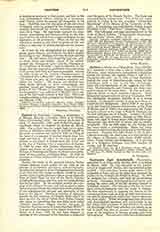

Castoria, a titular see of Macedonia. Livy (XXXI, XL) mentions a town near a lake in Orestis, called Celetrum, whose inhabitants surrendered to Sulpitius during the Roman war against Philip V (200 B.C.). Procopius (De aedif., vii, 3) tells us that Justinian, finding the town of Diocletianopolis ruined by the barbarians, built a city on the lake of Castoria. Tafel (De Via Egnatiane, 44-46) suggests that Celetrum, Diocletianopolis, and Castoria are three successive names of the same place. Be that as it may, Castoria seems to have replaced Celetrum. There Bohemond camped with his army at Christmas, 1083. The Byzantine chroniclers describe it as a strong fortress. In the tenth century it must have been occupied by the Bulgarians. About 1350 it was given up by the Emperor Joannes Cantacuzene to the King of Servia, and in 1386 it was captured by the Turks. As early at least as the reign of Basil II, Castoria was the first suffragan see of Achrida. Lequien (II, 315) mentions only three bishops: Joasaph in 1564, Hierotheus, who went to Rome about 1650, and Dionysius Mantoucas; this short list of course can be readily completed. The see still exists for the Greeks and has been made a metropolitan. Some ten Latin bishops are known from the thirteenth to the fifteenth centuries. (Lequien, III, 1087; Eubel, I, 179, II, 134.) Castoria is today the chief town of a mutessariflik in the vilayet of Monastir, with about 10,000 inhabitants—Turks, Greeks, and Bulgarians. It is also the see of a Bulgarian bishopric with 2224 families, 32 priests, and 22 churches.
S. PETRIDES

